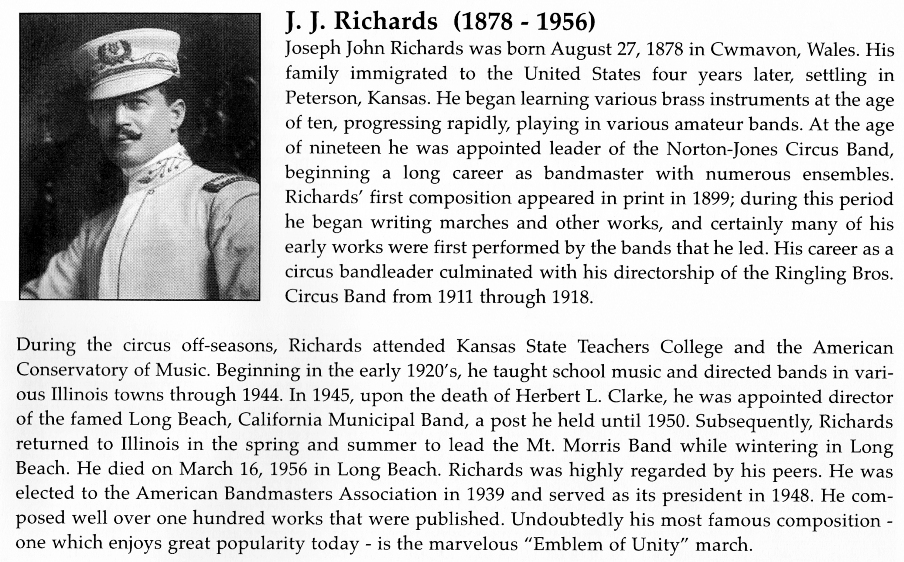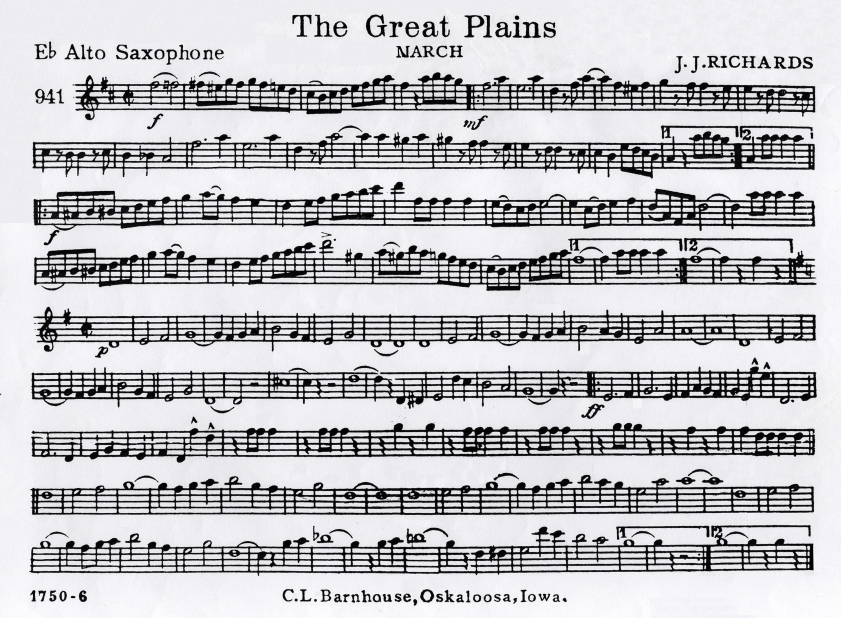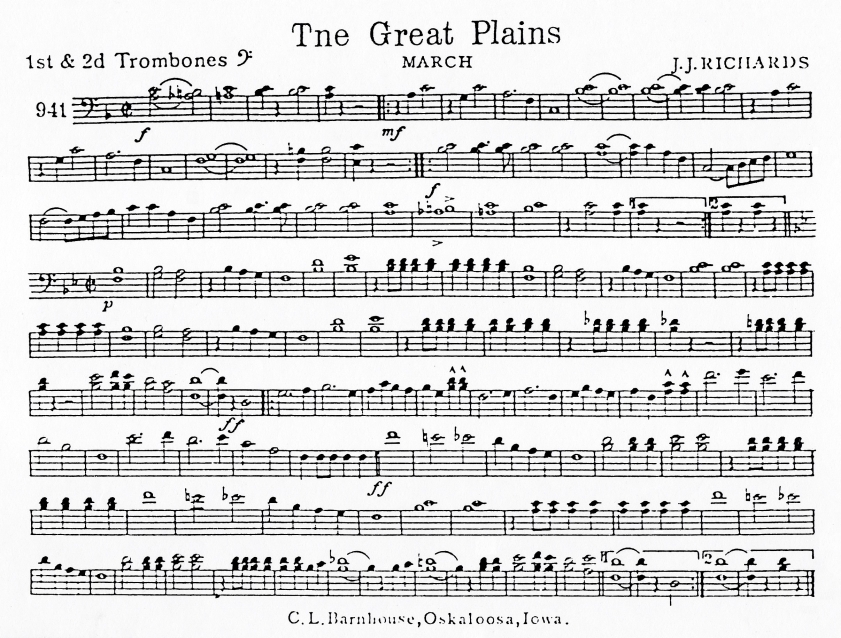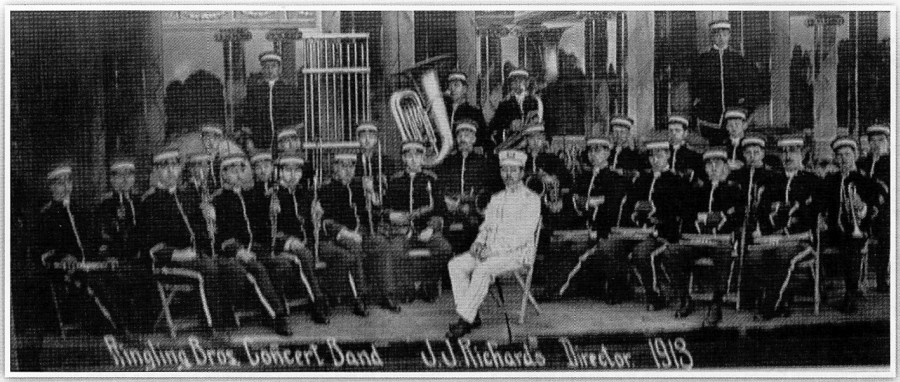| J. J. Richards,
who
composed South Hamilton's School Song,
The Great Plains March
|
||
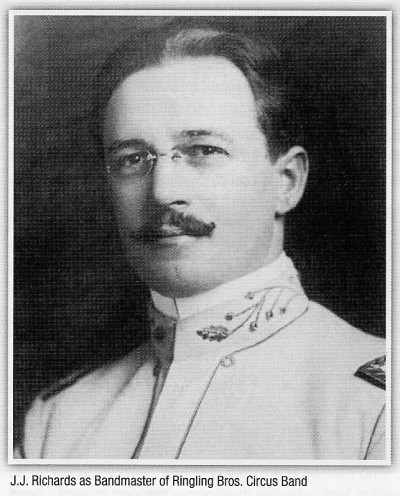 |
John Joseph, "J. J." Richards was a composer, arranger,
circus bandmaster and cornet soloist who, like so many other circus musicians,
had a significant career in music education following his retirement from
the Big Top.
He was born August 27, 1878 in Cwmavon, Wales and his family moved to America when he was about ten, settling in Yale, Kansas. He worked in the mines as a mule driver as a teenager, then attended Kansas State Teacher's College. By 1890 he was playing the cornet and trombone, and his first known professional engagement was in 1894 with the Fowler Musical & Comedy Company as a trombonist. At some point in the 1890's, he decided on the cornet as his main instrument and he played it for a couple of seasons in one of the touring "Uncle Josh Spruceby" shows. This was an under-canvas theatrical company that played on rube comedy. Richards also acted in the role of the sheriff. His first mention in the Conn Truth was in 1897 when he was playing a Conn Wonder cornet with Freeman's Celebrated Orchestra. Later that year he responded to an ad and was hired to form a 10-piece band for the Norton Jones Circus. This was his first known circus employment. |
|
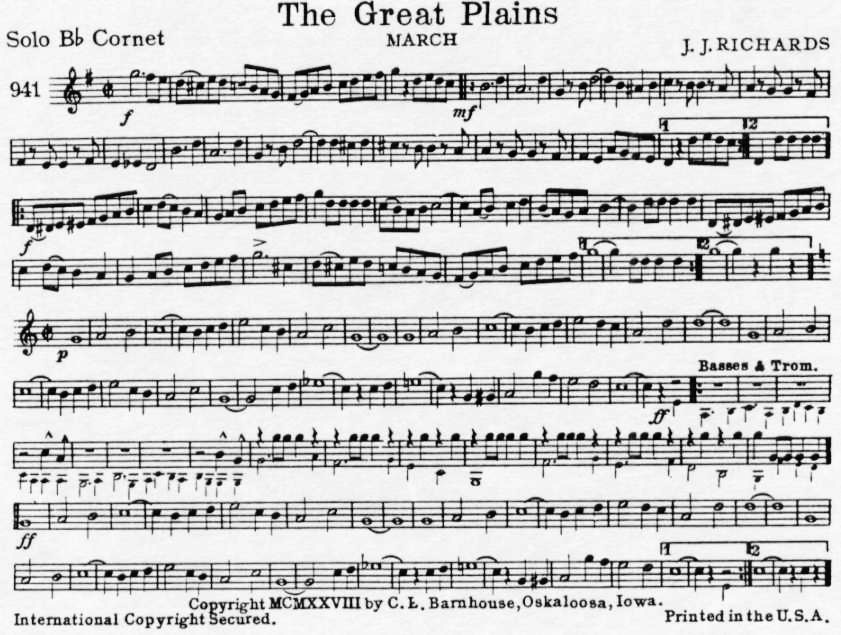 |
||
| For the next few years, his wherebouts have not yet
been determined. He is next found in 1902, back in a Spruceby
show. He played cornet in the Forepaugh-Sells Circus in 1906
and 1908 (and quite likely 1907). In 1908 he was the solo cornetist
with Fred Jewell's Barnum & Bailey Band. He also served
as the mailman for the show, a potentially lucrative and highly-prized
position. His first two compositions came from this season,
and his march The Barnum was dedicated to Jewell.
This would be his last year as "sideman," as he was named the Bandmaster with the Forepaugh-Sells Show in 1910. This was a full 30-piece concert band, and he also garnered excellent press reviews as cornet soloist. He returned with that show in 1911, when the band was augmented by 5 players. For the first time, he was listed in the program as a composer of two works for the center ring concert - the march Rameses and the corent solo Viletta. His circus career reached its zenith in 1912, when he succeeded Al Sweet as Music Director of the Ringling Brothers Circus. He wrote many marches and arranged or wrote the Spectacle music for the next six years, including Queen of Sheba, Cinderella, Joan of Arc, and Days of Old. Following the 1918 season, the Ringling Brothers (who had owned the Barnum & Bailey Greatest Show on Earth since 1907) combined the two giant shows, and offered the position of Music Director to Richards. |
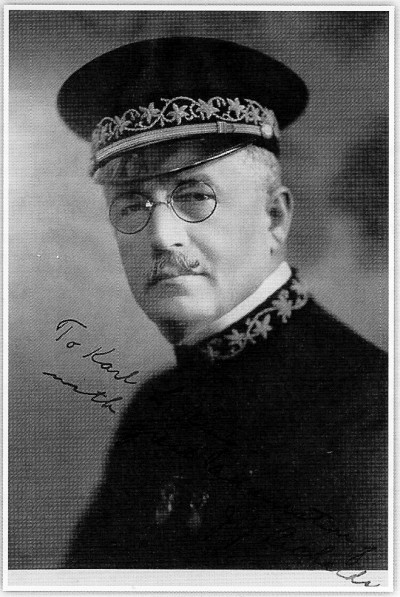 |
|
| He turned it down. Karl King
was Bandmaster of the Barnum & Bailey Show, and he also turned down
the position. Thus ended the circus careers of two of the greatest
circus composers and bandmaster. And as a consequence, ushered
in the unprecedented fifty-year tenure of Merle Evans on the bandstand
with the Ringling Brothers and Barnum & Bailey Circus.
|
||
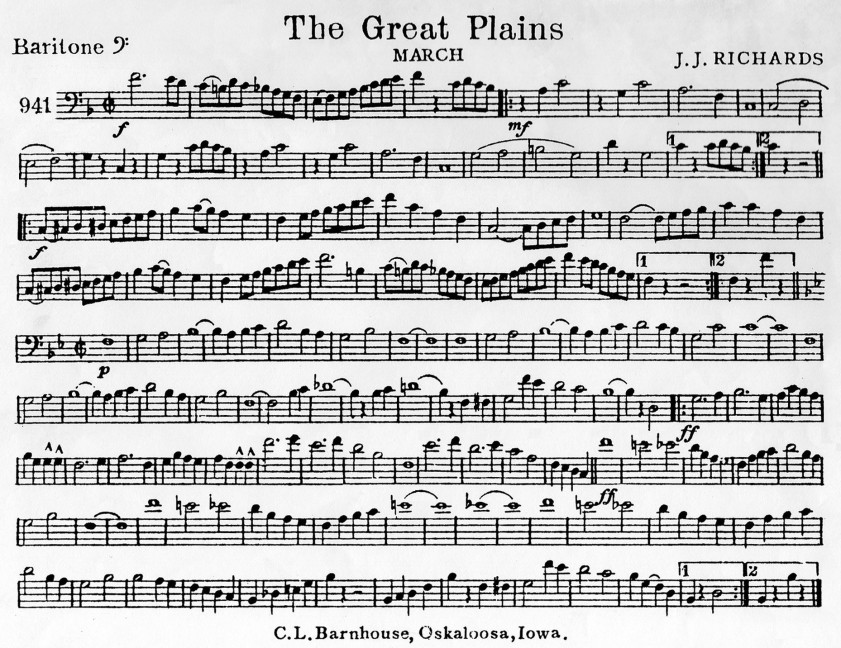 |
||
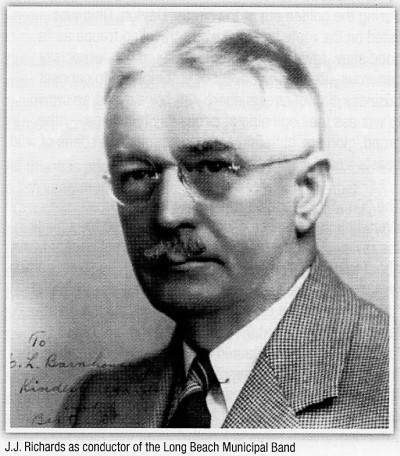 |
Richards moved to Rockford, Illinois, to teach music
and the U. S. Army Band School at Camp Grant. Then in 1921,
he moved to Pittsburg, Kansas, where he directed the Mizra Shrine Band
and taught in the local schools. He directed bands during the
winter seasons in Florica - at Daytona Beach in 1927 and 1928 and in Brandenton
from 1929 through 1931. and was elected its president in 1949.
He moved to Sterling, Illinois in 1936 to conduct the local municipal band.
He would soon also take over as conductor of the high school band and orchestra
and would be the founder and conductor of the Sterling Symphony.
Following the death of Herbert L. Clarke in 1945, Richards became the conductor of the renowned Long Beach Municipal Band, a position he held until mandatory retirement at age 72 in 1950. He became a member of the American Bandmasters Association in 1936 and was elected its president in 1949. He conducted the Mt. Morris Municipal Band in 1951, but gave it up in 1954 because of ill health. He died in Long Beach on March 16, 1956, survived by his wife, Anna. |
|
| J. J. Richards is best known for writing
120 compositions for circus and school bands, of which 95 were marches.
His most successful works were marches, including Crusade for Freedom
(1951),
Emlem of Unity (1931),
Golden Bear (1948), and Shield of Liberty (1939), and galops: Con Celerita (1911), Geneva, In Fretta (1925), The Meteor (1915), Speedway (1912), and Visalia (1909). The source of this biography of J. J. Richards was Volume
46, No. 4 issue of Circus Fanfare,
|
||
|
|
|
|
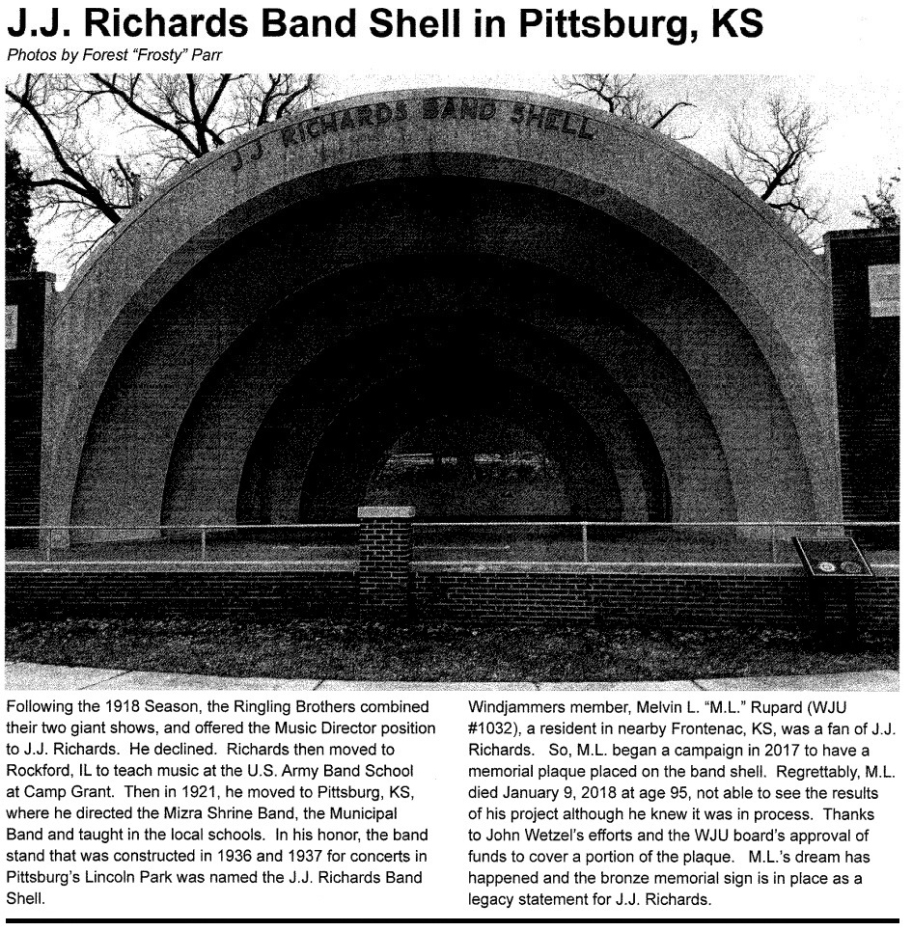
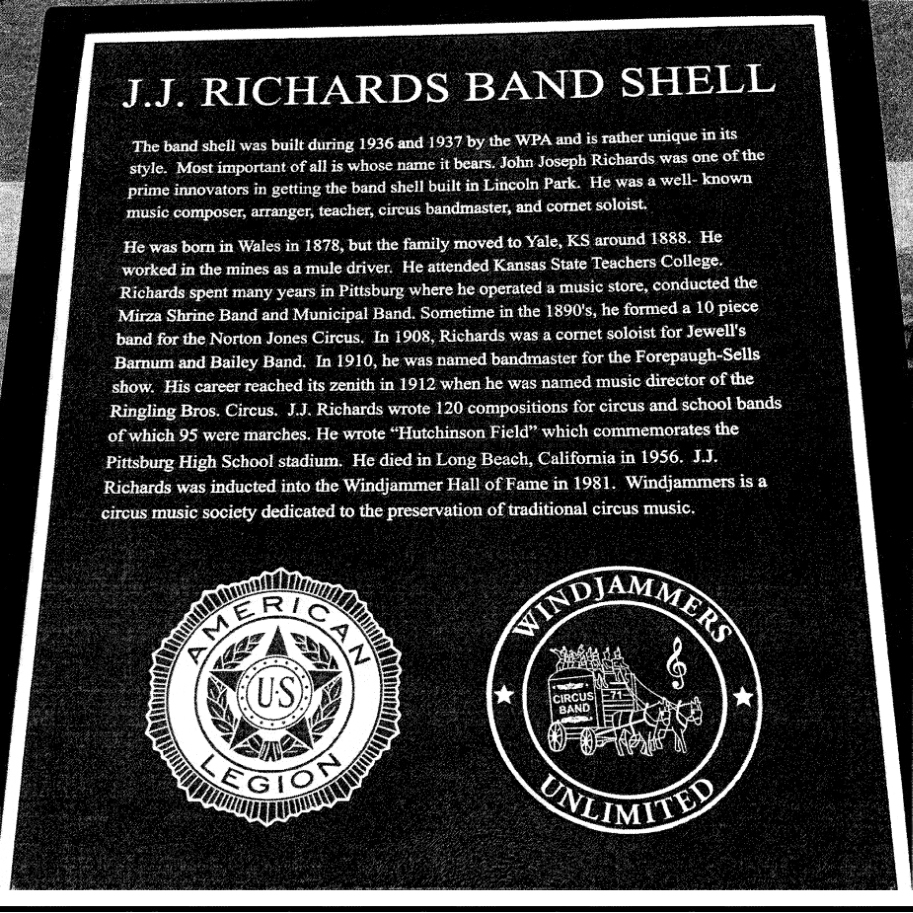 |
||
